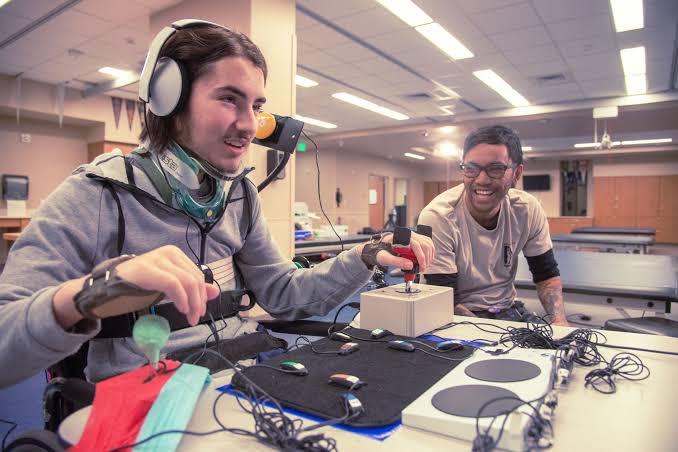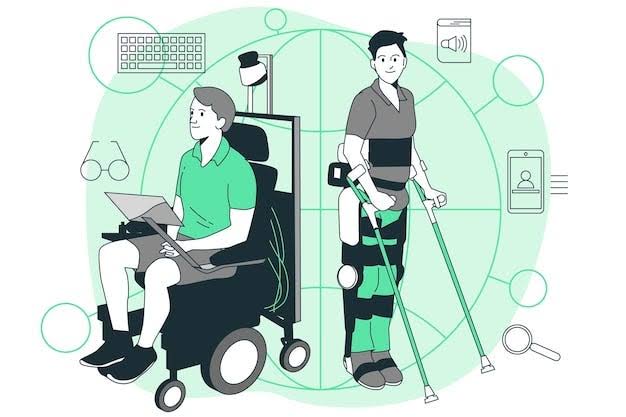Introduction to Technology and Accessibility
Technology has become a vital bridge in breaking down barriers for people with disabilities. From mobility aids to communication tools, modern innovations are helping individuals lead more independent and fulfilling lives. Accessibility technology focuses on designing products, devices, and systems that cater to the needs of people with various physical, sensory, and cognitive challenges.
These solutions are no longer niche; they are increasingly integrated into mainstream products, making it easier for individuals with disabilities to participate fully in education, work, and social activities.
Assistive Devices for Physical Disabilities
Physical disabilities can limit movement, strength, or endurance, but technology has provided numerous solutions to improve mobility and independence.
Examples include:
• Powered wheelchairs with advanced controls for smoother navigation
• Exoskeleton suits that help individuals with paralysis regain mobility
• Smart prosthetics that respond to muscle signals for more natural movement
• Adjustable workstations for better comfort and accessibility in workplaces
These innovations enable users to navigate public spaces more easily and engage in tasks that might otherwise be challenging.
Communication Tools for Hearing and Speech Impairments
For individuals with hearing or speech impairments, technology offers devices and applications that make communication more effective and inclusive.
Key tools include:
• Hearing aids with Bluetooth connectivity for clearer audio in different environments
• Video relay services that allow sign language interpretation during calls
• Real-time captioning and transcription services for meetings and events
• Speech-generating devices for individuals with limited verbal communication
Such tools ensure that conversations, whether in person or online, remain accessible to everyone.
Visual Assistance Technologies
Visual impairments can make reading, navigation, and daily tasks challenging. However, technology has developed powerful tools to help individuals with low vision or blindness.
Examples include:
• Screen readers that convert text into spoken words or Braille output
• Smart glasses that offer object and text recognition for improved mobility
• GPS-based navigation apps tailored for visually impaired users
• High-contrast and magnification settings in smartphones and computers
These solutions not only improve safety but also provide greater independence in education, work, and travel.
Cognitive Support Technologies
People with cognitive disabilities, such as learning disorders or memory challenges, benefit greatly from tools designed to improve understanding, organization, and recall.
Examples include:
• Task management apps with visual reminders and simple navigation
• Text-to-speech and speech-to-text software for easier reading and writing
• Educational apps designed for different learning styles and abilities
• Digital calendars with alert systems for medication and appointments
These technologies help users manage their day-to-day lives more effectively while supporting personal and professional development.
Accessibility Features in Mainstream Technology
One significant shift in recent years is the integration of accessibility features into everyday devices. Smartphones, laptops, and smart home systems now often include built-in settings for people with disabilities.
Examples of built-in features include:
• Voice assistants for hands-free operation
• Customizable display settings for better visibility
• Haptic feedback for non-visual notifications
• Voice-to-text features for quick communication
This inclusion in mainstream products reduces stigma and ensures that people with disabilities do not need separate or expensive specialized devices.
Transportation and Navigation Innovations
Getting around can be a major challenge for people with disabilities, but technology is transforming accessibility in transportation.
Advancements include:
• Ride-hailing apps with wheelchair-accessible vehicle options
• Public transport apps providing real-time accessibility information
• Autonomous vehicle research focusing on inclusive design
• Smart city infrastructure with sensors to aid navigation for visually impaired individuals
Such improvements enable more freedom of movement and greater participation in community life.
The Role of Artificial Intelligence in Accessibility
Artificial Intelligence (AI) is now playing a crucial role in enhancing accessibility. AI can adapt devices to a user’s specific needs and provide real-time assistance.
Examples include:
• AI-powered transcription for meetings and lectures
• Predictive text and communication aids for speech impairments
• Object recognition to describe surroundings to visually impaired individuals
• Personalized learning tools that adjust content based on performance
This adaptability makes technology more user-centered and responsive to different abilities.
Conclusion
Technology has transformed accessibility for people with disabilities by providing tools that address mobility, communication, vision, cognition, and navigation challenges. The integration of these innovations into both specialized and mainstream products ensures greater independence, inclusion, and equal opportunities. As technology continues to evolve, its role in creating a more accessible world will only grow stronger.




12 thoughts on “How Technology Enhances Accessibility for People with Disabilities”